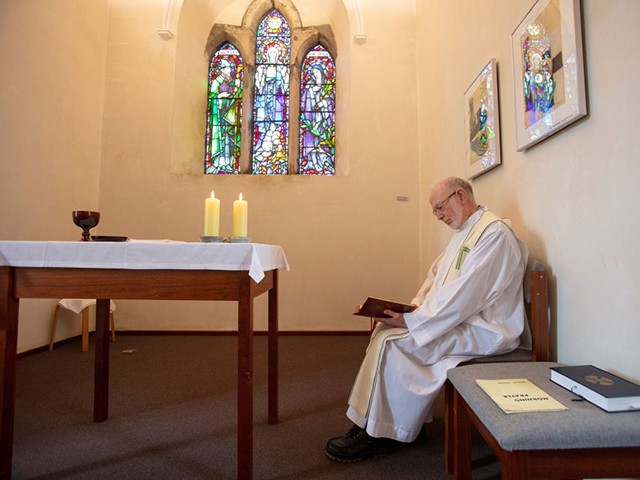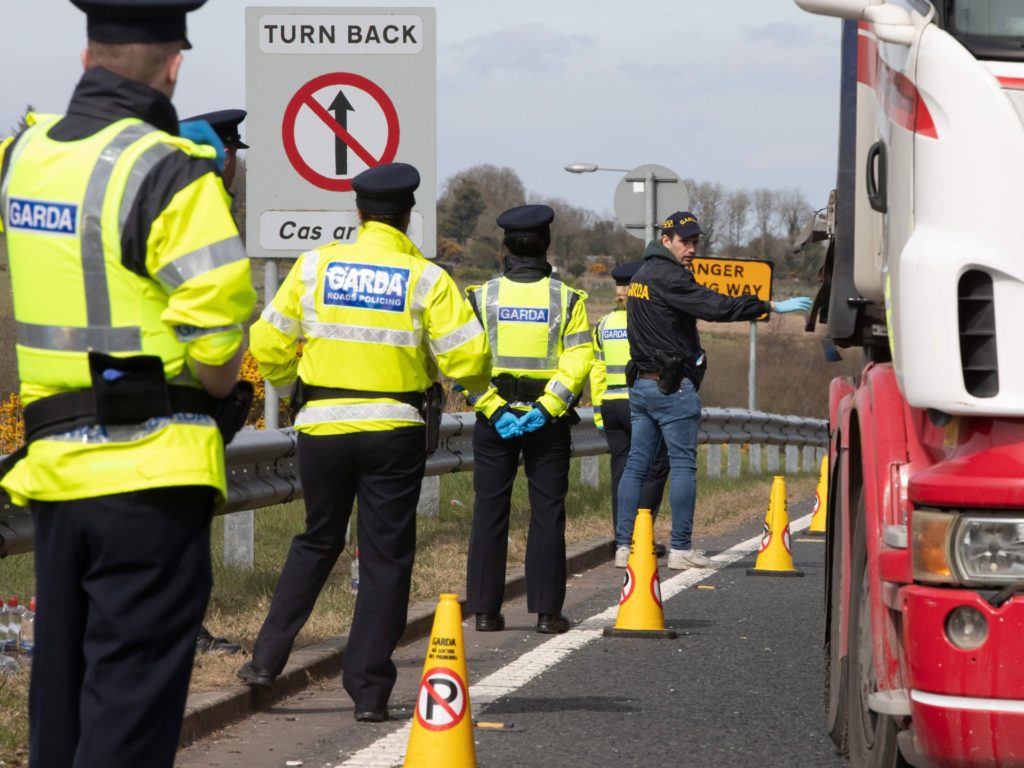A report by the OECD indicates Ireland had no excess deaths during the pandemic years 2020 to 2022, suggesting many of the thousands who died “with COVID” would have died anyway.
The Irish government, notorious for its panicked approach to the coronavirus, targeted its religious citizens for some of its harshest antivirus measures, outlawing going to church for more than a third of the year 2021.
Ireland’s ban on in-person religious worship went into effect in late 2020 and endured until May of 2021, despite widespread criticism.
The embargo on religious gatherings culminated with security forces breaking up a Latin Mass in County Westmeath not long before the prohibition was lifted.
In June, 2021, Ireland introduced its draconian vaccine passes, blocking unvaccinated individuals from entering restaurants, bars, and cinemas, or visiting nursing homes.
The Emerald Isle only lifted the vaccine requirement for accessing these services in January 2022.

File/Prior of Lough Derg, Father Laurence (La) Flynn prays inside St Mary’s Chapel at St. Patrick’s Purgatory on Lough Derg, currently closed to visitors due to the COVID-19 pandemic, near Donegal in Ireland, on July 27, 2020. (PAUL FAITH/AFP via Getty Images)
Ireland’s government also planned a “dystopian surveillance system” against the coronavirus, consisting of CCTV, phone, and transaction monitoring, according to the 2022 book Pandemonium: Power, Politics and Ireland’s Pandemic, by Hugh O’Connell and Jack Horgan-Jones, journalists for the Irish Independent and the Irish Times respectively.
Described as an “Orwellian plan,” the idea of the surveillance system was to ensure that Irish citizens were obeying the government’s severe measures, at times considered some of the harshest in the world. In the end, the scheme was not adopted, saving the Irish people from a significant breach of civil liberties.
Now, according to the new research contained in the OECD Health Working Paper no. 163, these measures were apparently never necessary.
Its finding that Ireland experienced no excess deaths during the years 2020 to 2022 means that the country had no more deaths from all causes during that time above what would normally be expected.

Irish Police (Garda) stop and check vechicles at the border crossing at Carrkcarnon, County Louth, Ireland, on April 9, 2020 under new powers to curb non-essential travel during the coronavirus crisis. (PAUL FAITH/AFP via Getty Images)
Ireland had an eight percent rise in its population between 2016 and 2022, as well as a 22 percent increase in numbers of those over 65, factors taken into account when calculating excess deaths.
“Adjusting mortality rates to take account of these changes has shown that Ireland did not record excess mortality during 2020-2022. In fact, Ireland had a lower-than-expected death rate,” stated the Department of Health regarding the findings.

COMMENTS
Please let us know if you're having issues with commenting.